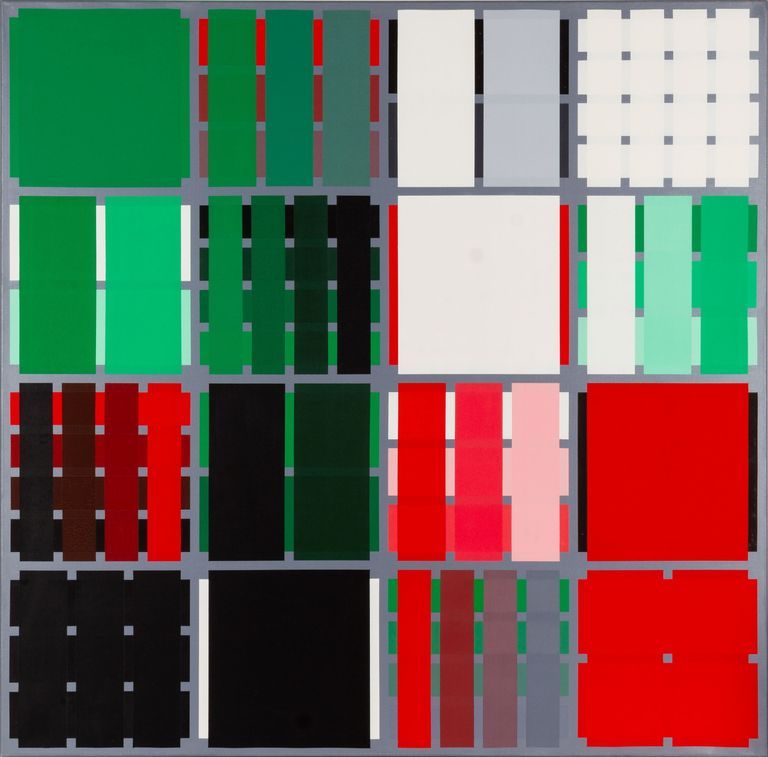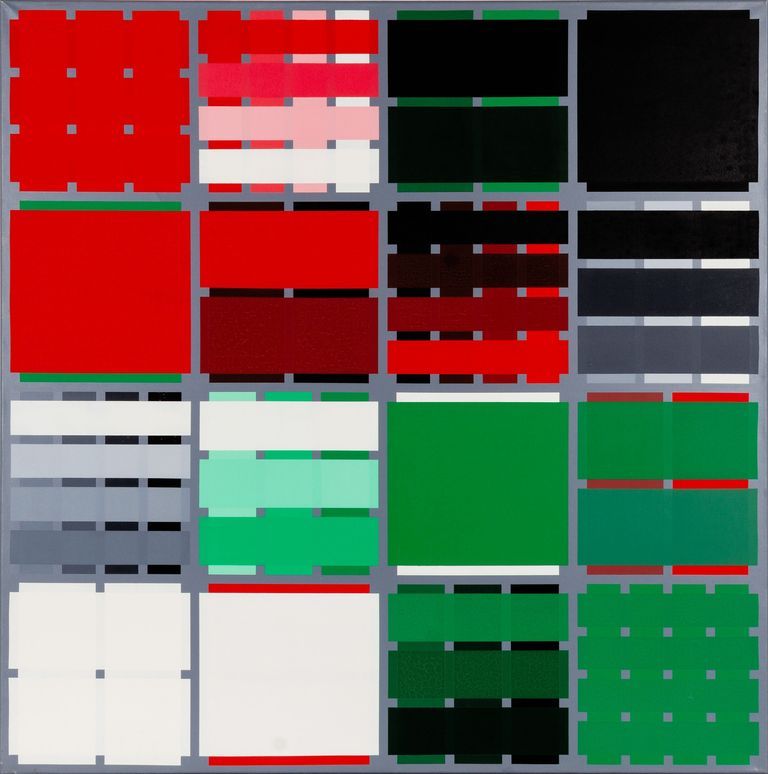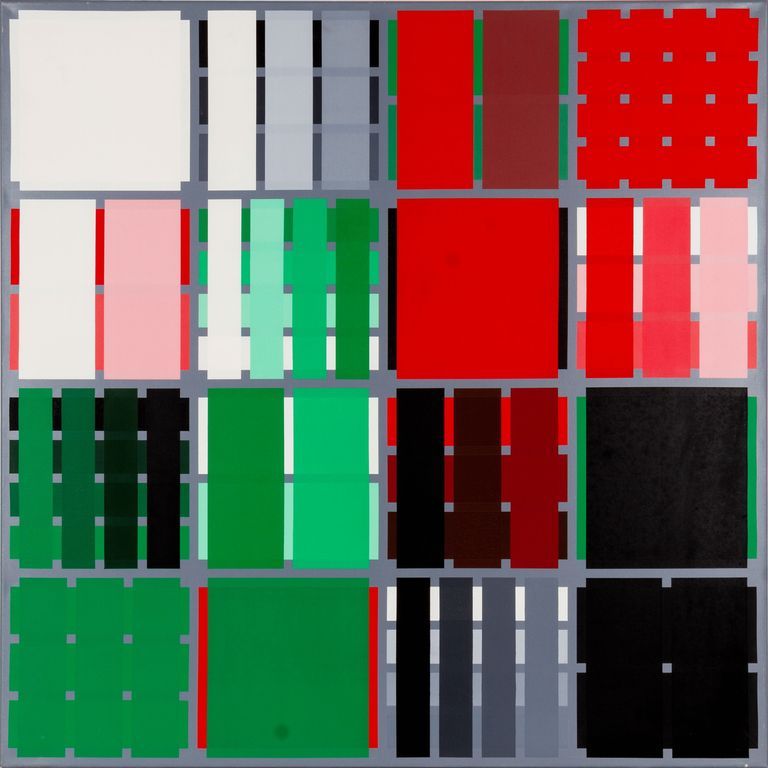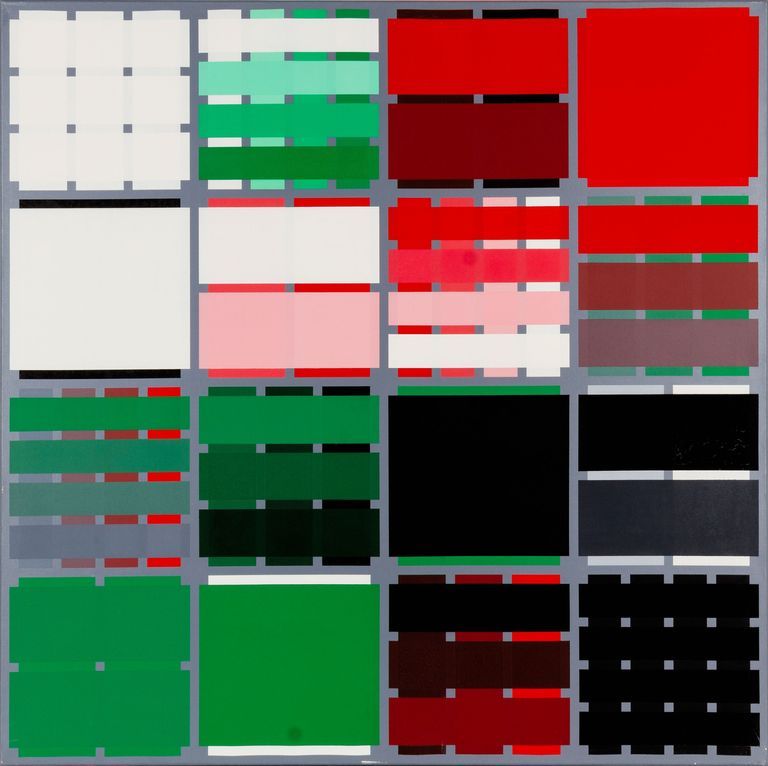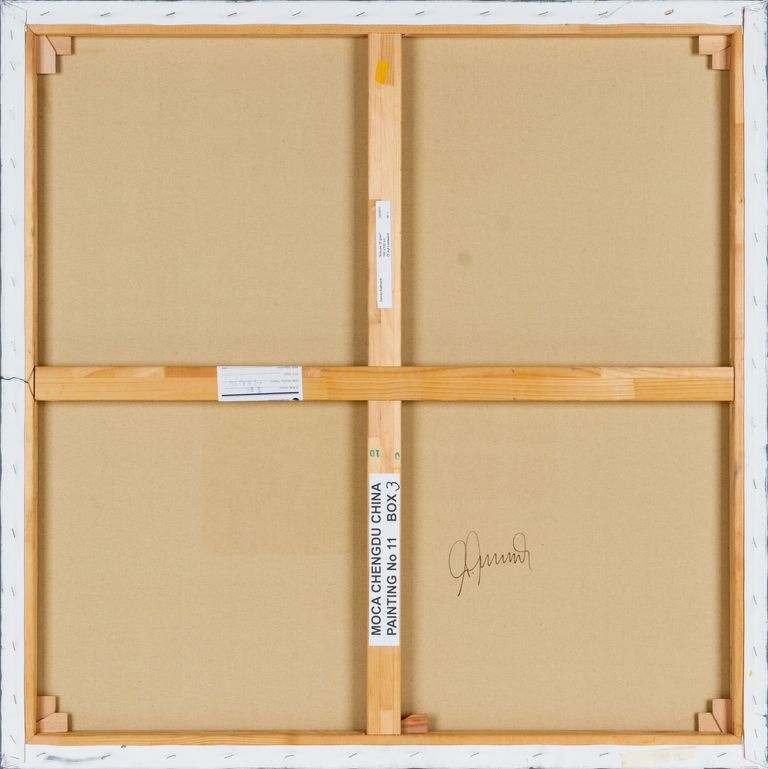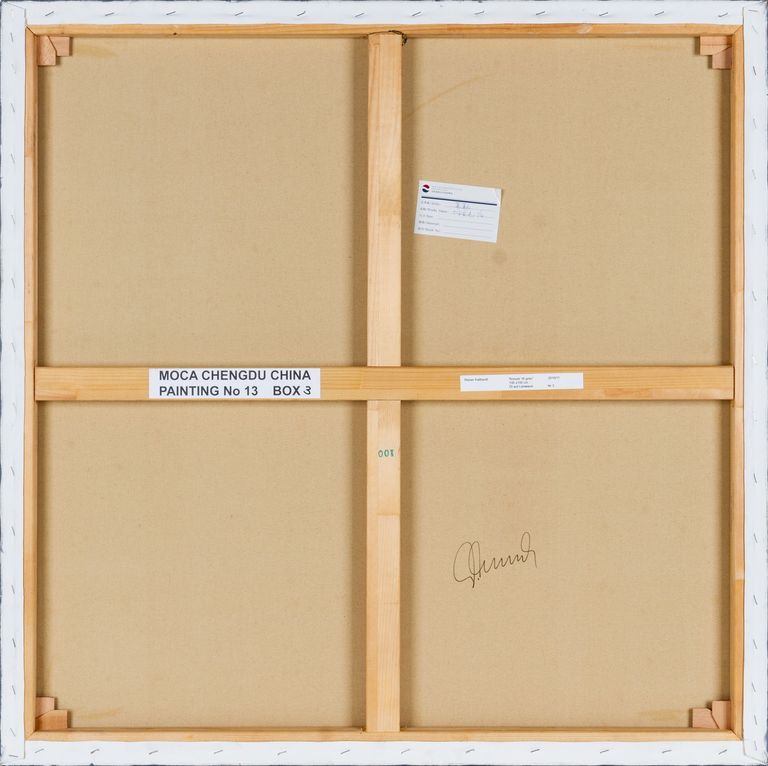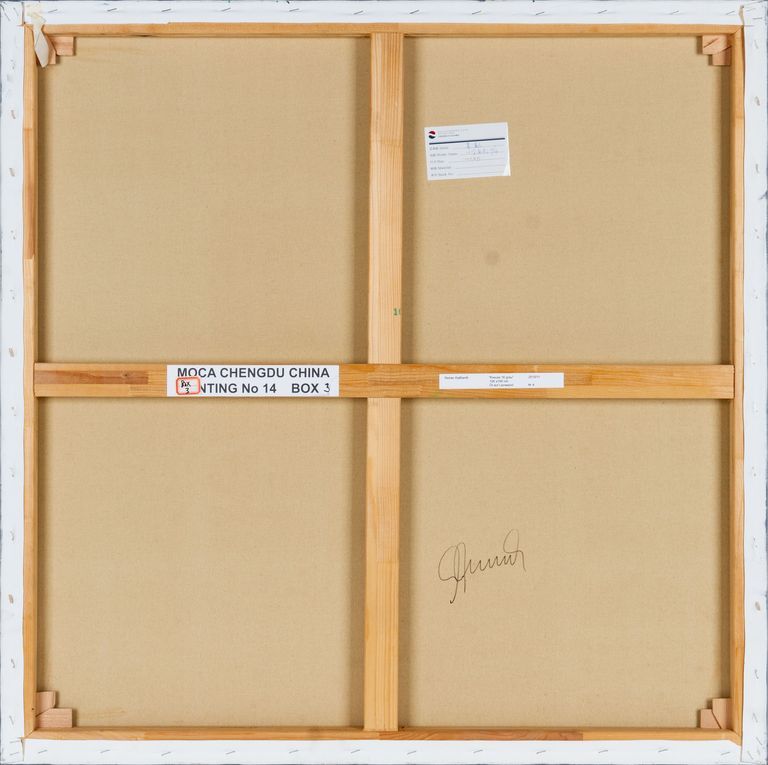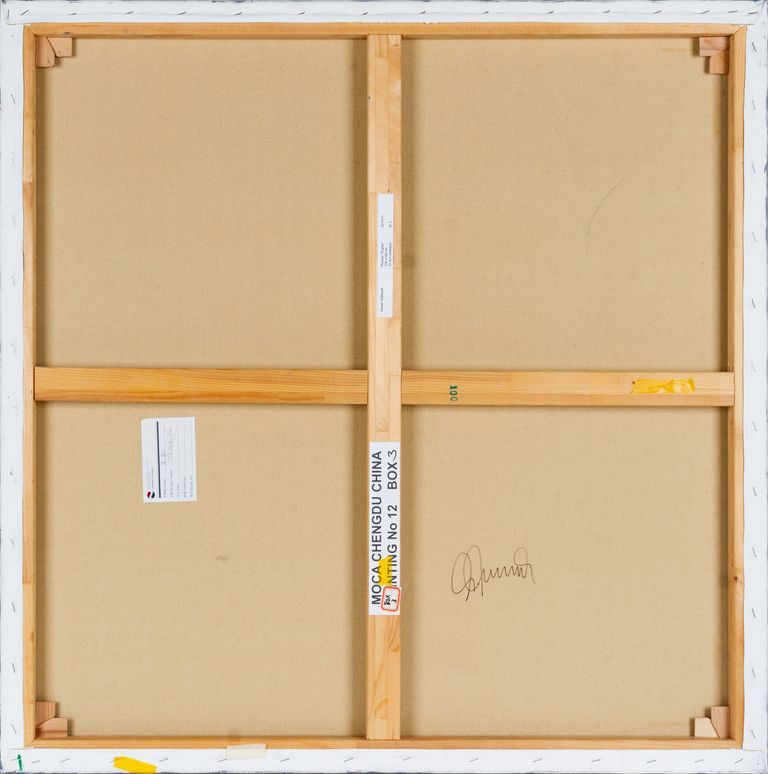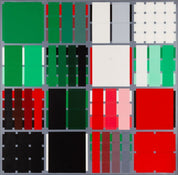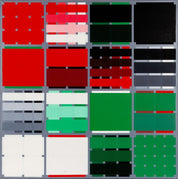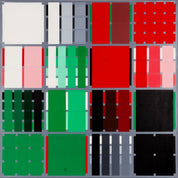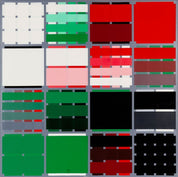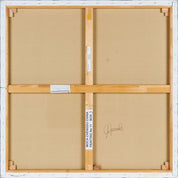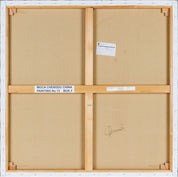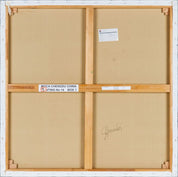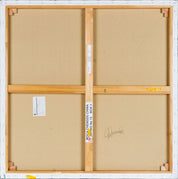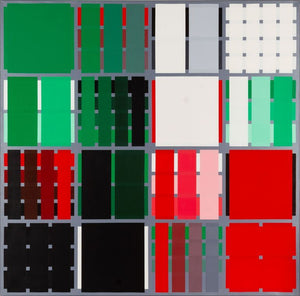Kreuze 16 grau (1–4)
Reiner Kallhardt
Artwork Details
Artwork Description
Title: Kreuze 16 grau (1–4)
Artist: Reiner Kallhardt
Date: 2010–2011
Medium: Oil on canvas
Dimensions: 39.4 x 39.4 in (100 x 100 cm) (each panel)
Artwork Identification
Kreuze 16 grau (1–4) is a four-part geometric abstraction by German artist Reiner Kallhardt. Each of the four square canvases measures 100 x 100 cm and is composed of rigidly structured grids, featuring carefully calibrated rectangles and cross motifs (kreuze), laid out in a modular arrangement. Executed in oil on canvas, the paintings utilize a systematic repetition of form while subtly shifting color combinations, giving each quadrant a distinct rhythm and internal logic.
Artistic Style and Influences
Rooted in Constructivist and Concrete Art traditions, Kallhardt’s work exemplifies a strict formal discipline while engaging color theory and visual perception. The palette—ranging from vibrant reds and greens to muted whites, blacks, and grays—echoes Josef Albers’ chromatic investigations, while the rigid structure recalls the legacy of Bauhaus and Minimalist systems-based art. The visual tension between symmetry and disruption invites viewers into a meditative engagement with pattern, space, and variation.
Historical Context
Painted between 2010 and 2011, this series marks Kallhardt’s mature engagement with seriality and reduction, continuing his lifelong investigation into the architecture of painting. Born in Germany in 1933, Kallhardt has contributed to European post-war abstraction through a body of work that embraces structure as both a compositional and conceptual foundation.
Provenance
Provenance documentation can be provided upon contact.
Condition and Conservation
All four canvases are in very good condition. The surfaces are pristine, with no signs of paint loss, abrasions, or restoration. The colors remain bold and stable, with the edges and corners of the stretchers intact.
Artistic Significance
Kreuze 16 grau (1–4) embodies Kallhardt’s precise visual language and his enduring interest in modular construction and chromatic interaction. This work exemplifies the rigor of post-war geometric abstraction while asserting a distinctive voice within contemporary European painting. The series is not only an exploration of form, but a sophisticated visual meditation on rhythm, balance, and controlled variation.

